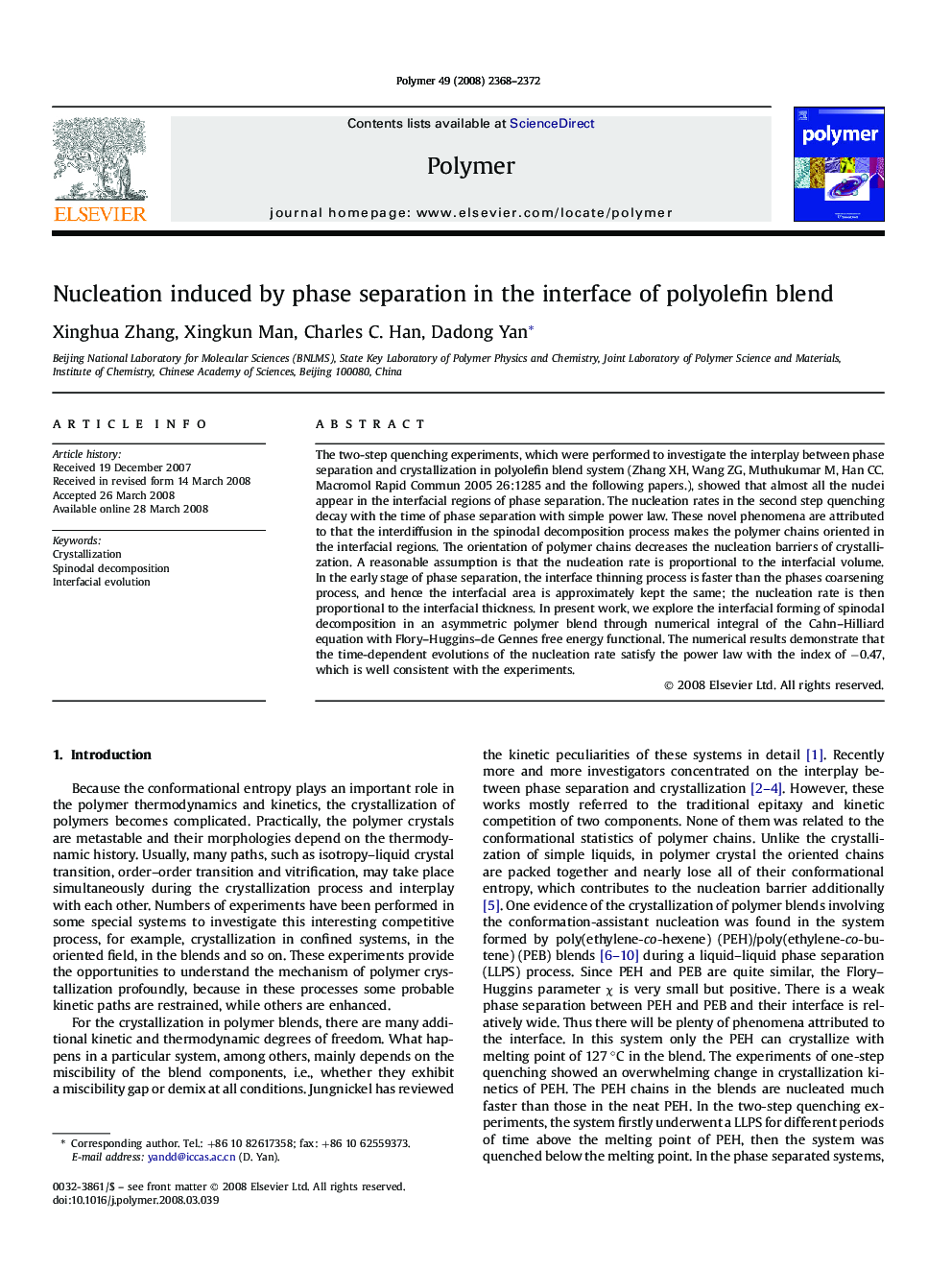| Article ID | Journal | Published Year | Pages | File Type |
|---|---|---|---|---|
| 5187421 | Polymer | 2008 | 5 Pages |
The two-step quenching experiments, which were performed to investigate the interplay between phase separation and crystallization in polyolefin blend system (Zhang XH, Wang ZG, Muthukumar M, Han CC. Macromol Rapid Commun 2005 26:1285 and the following papers.), showed that almost all the nuclei appear in the interfacial regions of phase separation. The nucleation rates in the second step quenching decay with the time of phase separation with simple power law. These novel phenomena are attributed to that the interdiffusion in the spinodal decomposition process makes the polymer chains oriented in the interfacial regions. The orientation of polymer chains decreases the nucleation barriers of crystallization. A reasonable assumption is that the nucleation rate is proportional to the interfacial volume. In the early stage of phase separation, the interface thinning process is faster than the phases coarsening process, and hence the interfacial area is approximately kept the same; the nucleation rate is then proportional to the interfacial thickness. In present work, we explore the interfacial forming of spinodal decomposition in an asymmetric polymer blend through numerical integral of the Cahn-Hilliard equation with Flory-Huggins-de Gennes free energy functional. The numerical results demonstrate that the time-dependent evolutions of the nucleation rate satisfy the power law with the index of â0.47, which is well consistent with the experiments.
